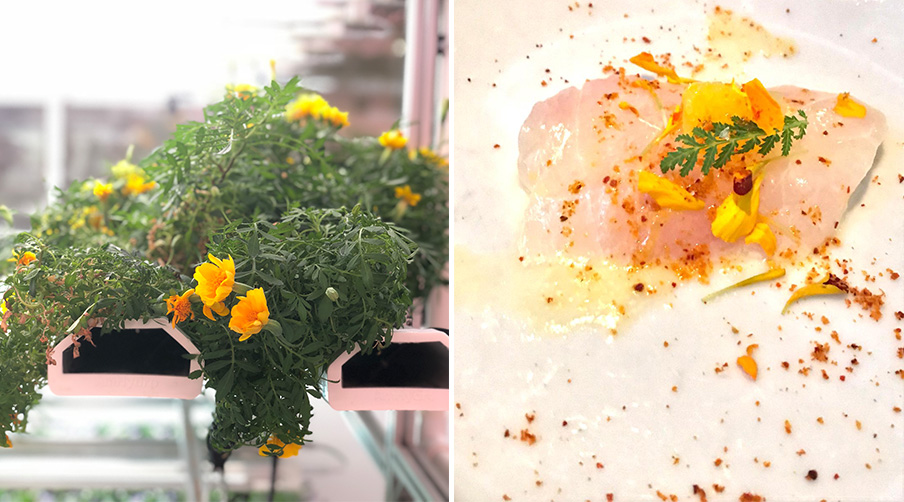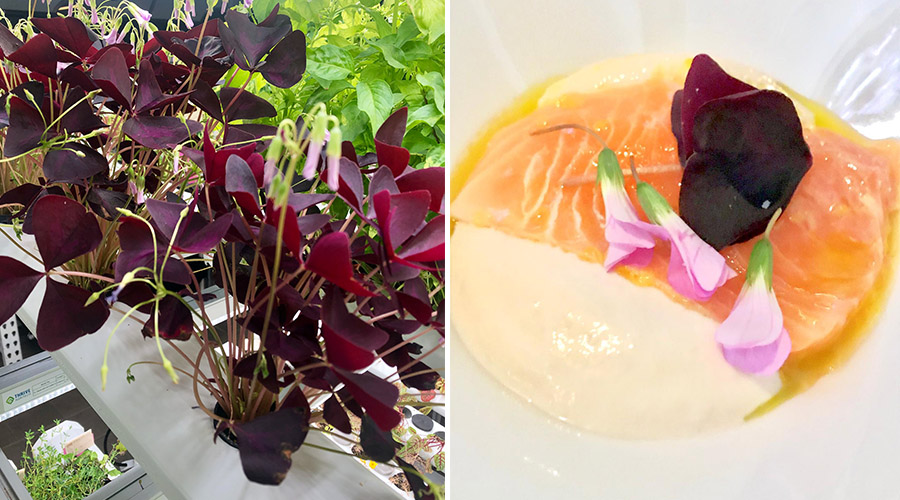One of the great things about being ICE’s director of sustainability is working with the hydroponic farm. It’s really wonderful when all the flowers and herbs in the garden are in full bloom.
When I started at ICE, one of my first tasks was to help create curriculum that provides students with more opportunities to interact with the farm. Now they are planting, harvesting and learning more about growing. Students also get a chance to taste their way through the plants they have harvested and ones that we grow, practicing how to think about creating and building flavors.
As a chef, I love being exposed to so many different flavors that I can use for dishes at Oceana. I’m exploring how to use some of these esoteric herbs, flowers and plants that we grow in the garden. Here are just a few that I have used at my restaurant.
Marigolds
The first time I tasted these leaves and flowers, my mind went right to oranges. They have a beautiful, sweet, citrusy flavor that is also floral. I didn’t think I could ever use these or know that they were edible. Now, the marigolds are fantastic in my wild striped bass crudo with oranges. I add a little lemon juice to help with the raw fish. These flowers are also tasty and colorful additions to salads.

Huacatay
When I heard about this herb, I knew exactly how I wanted to use it. Known as Peruvian black mint, it is traditionally used in a soup or a cream salsa served with grilled meats. At Oceana, we pair it with a ceviche and aji dulce pepper, chopping the leaves fresh, which works beautifully. All the flavors are indigenous to Peru. It goes to show you that where things grow together they typically work together.
Oxalis
Tasting these purple leaves and flowers makes me immediately think of sorrel. These have a very similar sour (“oxalis” actually means sour), herbal flavor that I knew would work with any dish that uses sorrel. Here, we did a play on a vichyssoise soup with sorrel and salmon.

Epazote
This is an herb I knew about before working in the farm. I had seen it a while ago in a Mexican dish of beans, so I was familiar with one application and was glad to see it available. It’s a uniquely flavored, very distinct and pungent herb. It has notes of oregano, mint, citrus and anise. You can use the leaves and stems, if they are tender, which is great for infusing flavor into a dish. I wanted to do a play on posole by cooking it with hominy, which added flavor well. Then I added some fresh epazote in right before serving the soup to give it an extra boost and that’s when the flavor became really pronounced.
Schedule a tour of ICE’s New York campus for a sneak peek inside the farm.




